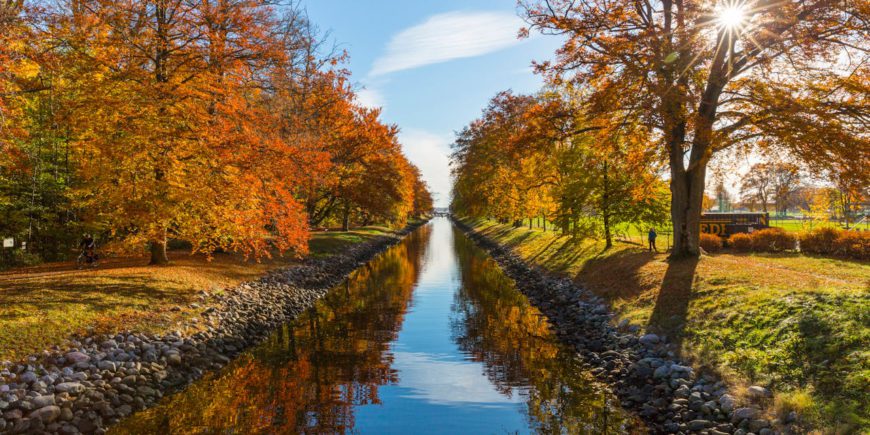In garden design and landscaping, natural elements such as crushed rock and garden rocks have become increasingly popular. These versatile materials add aesthetic appeal to outdoor spaces and serve practical purposes, enhancing the functionality and beauty of gardens. This article delves into the journey of crushed rock and garden rocks from the quarry to the garden, exploring their uses, benefits, and creative applications in landscape design.
The Origins of Crushed Rock and Garden Rocks
Crushed rock and garden rocks are derived from natural geological formations, typically sourced from quarries or riverbeds. Crushed rock is produced by crushing large stones into smaller fragments, resulting in irregularly shaped pieces with varying sizes and textures. On the other hand, garden rocks, also known as landscaping rocks or decorative stones, are often naturally occurring rocks selected for their aesthetic qualities and suitability for landscaping purposes.
Enhancing Garden Design with Crushed Rock
Crushed rock is a versatile and practical landscaping material, offering a range of uses in garden design. One of its primary functions is as a ground cover, providing a durable and visually appealing surface for garden pathways, driveways, and patio areas. Whether used alone or mixed with other materials such as gravel or sand, crushed rock adds texture and depth to outdoor spaces, creating visual interest and defining the landscape.
In addition to ground cover, crushed rock can be used to construct garden borders, retaining walls, and raised beds, adding structure and definition to garden beds and planting areas. Its natural appearance blends seamlessly with surrounding vegetation, enhancing the overall aesthetic of the garden while providing a functional solution for soil erosion and water runoff.
Creating Focal Points with Garden Rocks
Garden rocks, with their diverse shapes, sizes, and colours, serve as focal points and accent features in garden design. These natural elements add visual interest and dimension to outdoor spaces, creating focal points that draw the eye and anchor the landscape. Whether used as standalone sculptures, rockeries, or incorporated into water features and rock gardens, garden rocks impart a sense of natural beauty and tranquility to the garden environment.

Placing garden rocks can be strategic, guiding the flow of movement and creating a visual hierarchy. Large boulders or rock formations can act as anchor points, anchoring the design and providing stability and permanence. Smaller rocks and pebbles can be scattered throughout the landscape, adding texture and contrast to planting beds and hardscape features.
Practical Benefits of Crushed Rock and Garden Rocks
Beyond their aesthetic appeal, crushed rock and garden rocks offer practical benefits for gardeners and landscapers. Their natural composition allows for excellent drainage, preventing waterlogging and soil compaction in garden beds and planting areas. This promotes healthy root growth and reduces the risk of plant diseases caused by excess moisture.
Furthermore, the use of crushed rock and garden rocks can help minimize garden maintenance requirements. Unlike organic mulches, which require regular replenishment and replacement, these natural materials are durable and long-lasting, requiring minimal upkeep once installed. Their resilience to weathering and environmental wear ensures that they maintain their appearance and functionality over time, providing lasting beauty and value to the garden.
Sustainability and Environmental Considerations
In addition to their aesthetic and practical benefits, crushed rock and garden rocks contribute to sustainable garden practices and environmental stewardship. These natural materials are inherently eco-friendly, requiring minimal processing and energy expenditure compared to synthetic alternatives. Using locally sourced materials, gardeners and landscapers can reduce transportation emissions and support regional economies.
Moreover, using crushed rock and garden rocks promotes soil health and biodiversity in the garden ecosystem. Their porous surfaces allow rainwater to infiltrate the soil, replenishing groundwater supplies and supporting healthy microbial activity. This, in turn, enhances soil fertility and promotes the growth of beneficial organisms such as earthworms and beneficial bacteria.
Furthermore, incorporating garden rocks and crushed rock into the garden design helps reduce the need for chemical fertilizers and pesticides. By creating natural barriers and habitat zones, these materials provide refuge for beneficial insects and wildlife, contributing to a balanced and resilient garden ecosystem.
Creative Applications and Design Ideas
The creative potential of crushed rock and garden rocks extends beyond traditional landscaping techniques, inspiring innovative design concepts and artistic expressions. Gardeners and landscapers can experiment with various textures, colours, and arrangements to create unique, personalized outdoor spaces that reflect their styles and preferences.
For instance, crushed rock can be mixed with resin or concrete to create custom paving stones, stepping stones, or garden ornaments. By incorporating decorative aggregates such as coloured glass or recycled materials, gardeners can add a pop of colour and whimsy to their landscape designs.
Similarly, garden rocks can be arranged creatively or stacked to create natural sculptures and rockeries. By combining different sizes and shapes of stones, gardeners can evoke a sense of drama and movement in the garden, transforming ordinary landscapes into works of art.
In conclusion, crushed rock and garden rocks are invaluable resources for gardeners and landscapers. They offer a multitude of benefits for both aesthetic and environmental purposes. From pathways and borders to focal points and water features, these natural materials enhance the beauty and functionality of outdoor spaces while promoting sustainability and biodiversity.
By incorporating crushed rock and garden rocks into their landscape designs, gardeners can create inviting outdoor environments that harmonize with the natural surroundings and provide habitat for beneficial organisms. Whether used in traditional gardens, contemporary landscapes, or ecological restoration projects, these versatile materials contribute to garden ecosystems’ beauty, resilience, and sustainability for generations to come.




